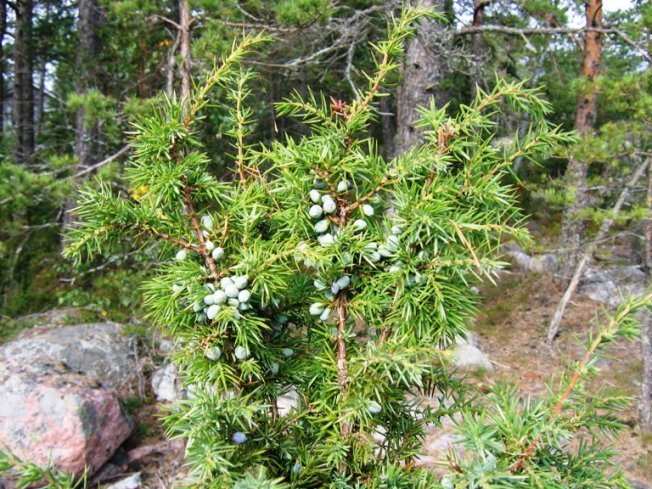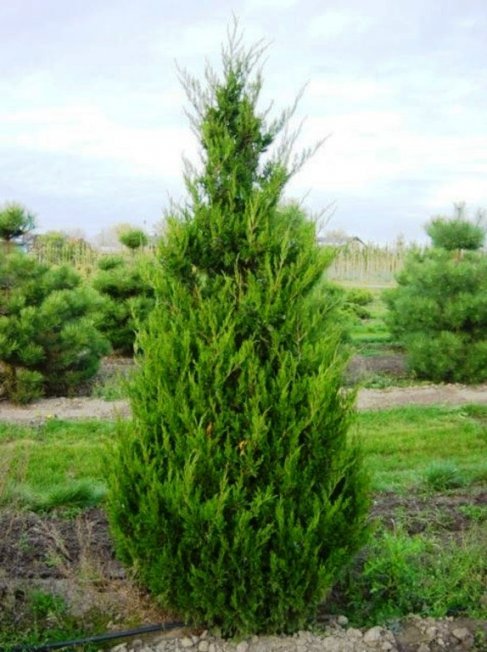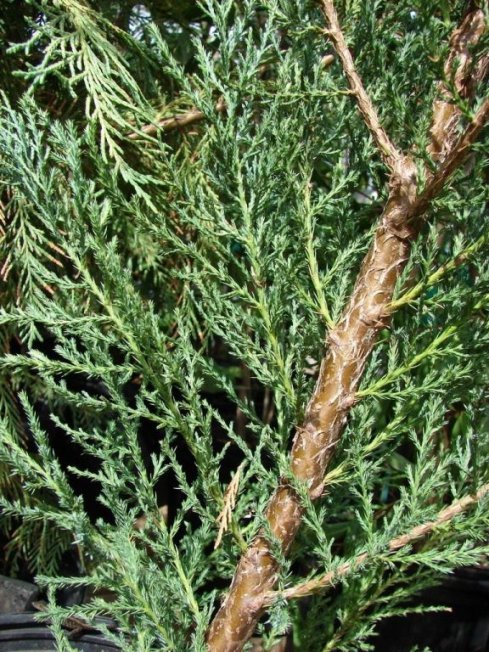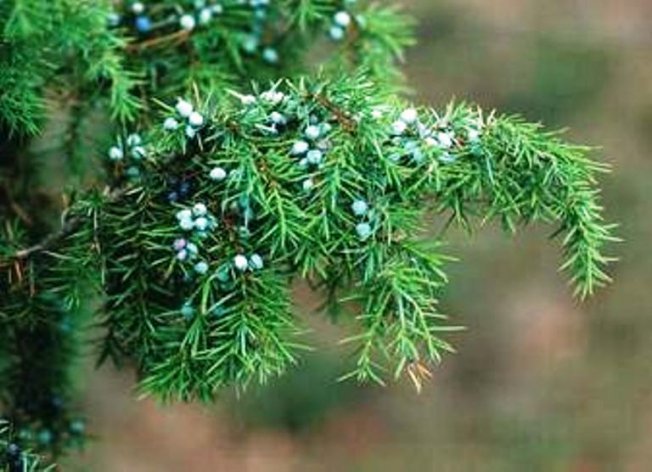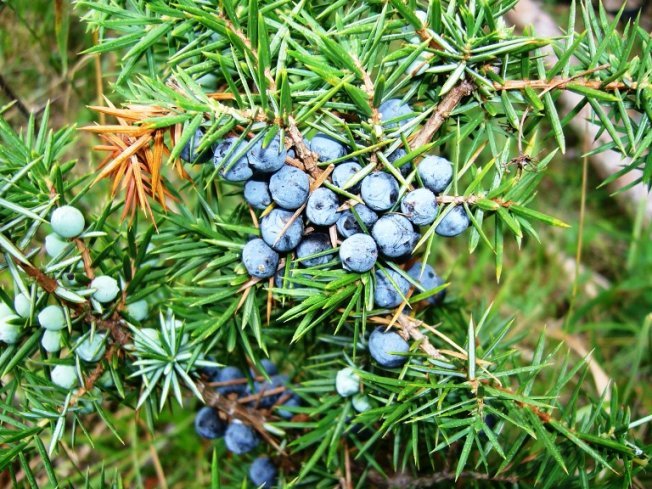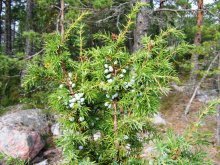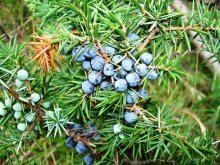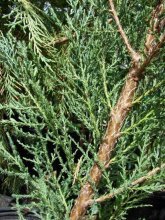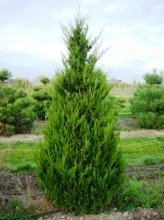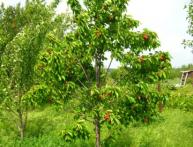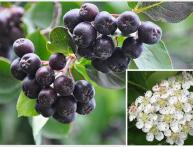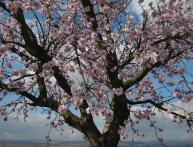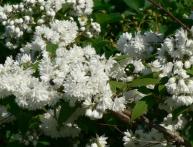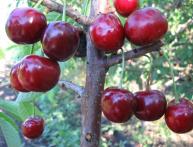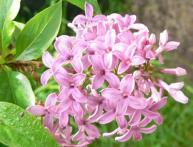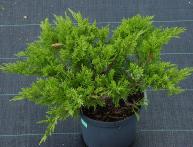Heather - what kind of plant is it, what does it look like in the photo, medicinal and magical properties
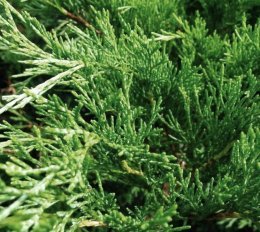
Many people confuse heather and heather, which is not entirely correct.
Veres is one of the names common juniper, a fairly common and well-known plant.
Content:
- Veres - what is it?
- Juniper, or heather, description and photo
- Is veres poisonous?
- Medicinal properties of the plant
- The magical properties that the ancient Slavs attributed to the Central Asian juniper
Veres - what is it?
This is a perennial plant that belongs to the Cypress family. Another name for this plant is brainweed, potion of the Sabines, small cedar. It is an evergreen perennial.
The height of the shrub can reach one and a half meters. It is distinguished by a powerful root system and a thin stem covered with brown bark. The foliage is small.
It can be found in the wild throughout the Northern Hemisphere. Veres, or common juniper - the most widespread species of junipers with a wide distribution area.
Often found on dry mountain slopes, in the undergrowth of mixed forests. Despite the fact that it belongs to conifers, it is rarely found in the undergrowth of thin coniferous forest communities. It forms entire groups in forest clearings and edges.
Differs in frost resistance. Despite the fact that it tolerates shading, it grows better in open and well-lit places.
It prefers poor sandy and podzolic soils with moderate moisture. But it can develop in excessively wet and even swampy areas.
Juniper, or heather, description and photo
Another name for heather is common juniper. Many people mistakenly believe that heather and heather are the same plant, which is a grave mistake. These plants are not relatives, there is a fairly significant difference between them and they should not be confused.
Heather is a shrub or tree, usually up to three meters high, some species can reach a height of twelve meters.
Other features include:
- Egg-shaped or cone-shaped crown. Female shrubs have a more ascending crown, sometimes even with branches inclined to the ground, while male shrubs have a narrower crown;
- The bark is gray-brown or dark gray with longitudinal peeling. Only the shoots are distinguished by purple-brown tints;
- The foliage can reach one and a half centimeters in length and seven millimeters in width. The foliage is rigid and sessile in shape, subulate-pointed or linear-subulate. The edges are prickly, the needles are triangular in cut, dense in structure with a shallow grooved surface.
- On a branch, the foliage is arranged in a ring-like pattern, three for each turn of the ring, and can remain on the branch without falling off for four years;
- These are dioecious plants with yellowish, almost sessile male cones and female berry cones. The diameter of the latter can vary from five to nine millimeters; their shape resembles a ball of light green color while unripe and black-blue with a bluish coating when ripe;
- The first berries ripen in the second or third year in the fall. Three triangular seeds of a yellowish-brown hue develop in the cone;
- Reproduction is predominantly by seed;
- some plant specimens can live up to six hundred years.
You can find many photos of this plant on the Internet to compare heather and heather. This will be enough to understand how different these plants are and not to confuse them anymore.
We invite you to watch an interesting video about Veres:
Is veres poisonous?
Of all the types of juniper, heather can be called conditionally edible. However, it is important to remember that it cannot be considered edible either. The beauty of the branches and berries should not deceive; you should approach its consumption with the utmost care. It is recommended to use veres only for treatment purposes.
Ground dry berries are used in alternative medicine. In areas of Siberia, some people use small amounts of ground berries as spices, which are added to the meat of wild birds or animals. At the same time, no more than five berries are used per kilogram of meat.
If you do decide to use heather, it is important to be sure that it is common juniper and not any other variety of juniper.
This is very important, since a mistake can lead to the most unpleasant consequences, even death.
Medicinal properties of the plant
In addition to the general beauty of the shrub, heather is known for a large number of beneficial properties, which has led to its widespread use in alternative medicine.
Thus, common juniper provides:
- Activation of secretory activity;
- Bactericidal effect
- Disinfection;
- Blood purifying effect;
- Diuretic effect;
- Anesthesia;
- Increased appetite;
- Anti-inflammatory effect;
- Diluting sputum and accelerating its discharge;
- Wound healing effect;
- Stress relief.
Such a large-scale use of heather is due to the large number of useful substances contained in the plant. So only its berries contain a large amount of valuable essential oil, which includes substances such as uneol, sabinene, pinene, terpineol, cabene and camphor.
In addition, the fruits contain large amounts of fatty oil, pectin, coloring matter, sugars, wax, glycosides and resins.
The same substances are contained in juniper cones.
The bark and roots are no less remarkable in their composition. They contain substances with bactericidal, anti-inflammatory and thinning effects. There are also tannins and diterpene alcohols.
You should not ignore pine needles, which contain a large amount of phytoncides that have a depressing effect on pathogenic microorganisms. That is why not only brewing pine needles, but also inhaling pine essential oil in natural conditions will be effective.
Thus, thirty kilograms of phytoncides evaporate from a hectare of juniper in one day.
In addition, pine needles contain tannins, essential oils and large amounts of vitamin C.
Heather is a common juniper, let's remember its healing properties:
The magical properties that the ancient Slavs attributed to the Central Asian juniper
Like many other plants, juniper is not spared from popular belief. So in some countries it is used as a funeral plant. They burn it and line the path for the deceased with branches. However, the Slavs used pine or spruce branches for these purposes.
Our ancestors used Central Asian juniper as amulets against evil spirits and the evil eye.For this, fragrant branches, previously illuminated in the church, were hung on the walls of the house, placed under the bed and behind the images.
They also believed that this plant could save not only people, but also livestock from diseases.
Often branches were hung in barns and stables, which was supposed to protect livestock from the evil eye, various diseases, snakes, damage and other evils.
Even now, juniper is used in rituals to remove damage, love spells and the evil eye. Thus, the plant does not lose popularity not only from a medical, but also from a spiritual point of view.
Heather, or common juniper, is an evergreen aromatic plant with a wide distribution area. Known for a large number of useful substances, it is used in alternative medicine to treat many diseases.

